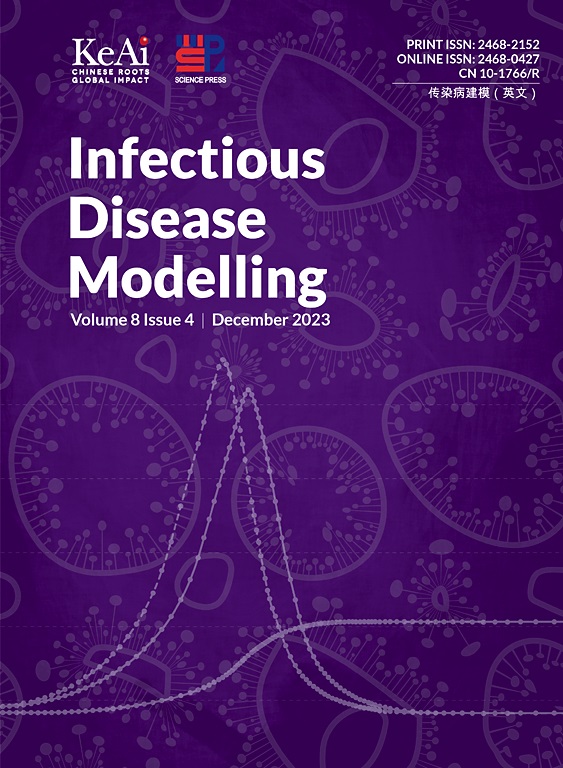比较SIRC模型中的病毒潜伏期:确定性方法与随机方法
IF 2.5
3区 医学
Q1 Medicine
引用次数: 0
摘要
时间延迟是随机流行病系统建模的一个基本特征,因为它们捕获了疾病传播中固有的潜伏期和其他生理滞后。在这项工作中,我们研究了一个随机SIRC(易感-感染-恢复-交叉免疫)流行病模型,其中延迟被纳入传播期以反映潜伏期。为了解释环境可变性,我们研究了两种随机公式:经典方法,它在每个隔间中添加独立的白噪声,以及概率,事件驱动模型,其中随机性直接来自转移概率。我们研究的一个关键焦点是在传播术语中不同延迟公式之间的比较,特别是将标准方法(延迟仅作用于受感染的隔间)与将延迟分配给易感人群和受感染人群的替代公式进行对比。通过系统的数值模拟,我们发现延迟公式的选择强烈地影响了初始流行病高峰的时间和大小,而长期(渐近)行为更加鲁棒,但对潜在的随机框架仍然敏感。特别是,概率模型更忠实地描述了相关波动和灭绝现象,比经典方法更准确地捕捉了流行病过程的生物学复杂性。这些结果强调了延迟表示和随机建模策略在塑造流行病动力学的定性和定量特征方面的重要性。本文章由计算机程序翻译,如有差异,请以英文原文为准。
Comparing virus incubation time in SIRC models: Deterministic versus stochastic approaches
Time delays are a fundamental feature in modeling stochastic epidemic systems, as they capture the incubation period and other physiological lags inherent in disease transmission. In this work, we investigate a stochastic SIRC (Susceptible-Infectious-Recovered-Cross-immune) epidemic model where the delay is incorporated into the transmission term to reflect the incubation period. To account for environmental variability, we examine two stochastic formulations: the classical approach, which adds independent white noise to each compartment, and a probabilistic, event-driven model in which stochasticity arises directly from transition probabilities.
A key focus of our study is the comparison between different delay formulations in the transmission term, specifically contrasting the standard approach—where the delay acts only on the infected compartment—with alternative formulations that distribute the delay across both susceptible and infected populations. Through systematic numerical simulations, we find that the choice of delay formulation strongly influences the timing and magnitude of the initial epidemic peak, while the long-term (asymptotic) behavior is more robust but remains sensitive to the underlying stochastic framework. The probabilistic model, in particular, offers a more faithful depiction of correlated fluctuations and extinction phenomena, capturing the biological complexity of epidemic processes more accurately than the classical approach. These results underscore the importance of both the delay representation and the stochastic modeling strategy in shaping the qualitative and quantitative features of epidemic dynamics.
求助全文
通过发布文献求助,成功后即可免费获取论文全文。
去求助
来源期刊

Infectious Disease Modelling
Mathematics-Applied Mathematics
CiteScore
17.00
自引率
3.40%
发文量
73
审稿时长
17 weeks
期刊介绍:
Infectious Disease Modelling is an open access journal that undergoes peer-review. Its main objective is to facilitate research that combines mathematical modelling, retrieval and analysis of infection disease data, and public health decision support. The journal actively encourages original research that improves this interface, as well as review articles that highlight innovative methodologies relevant to data collection, informatics, and policy making in the field of public health.
 求助内容:
求助内容: 应助结果提醒方式:
应助结果提醒方式:


